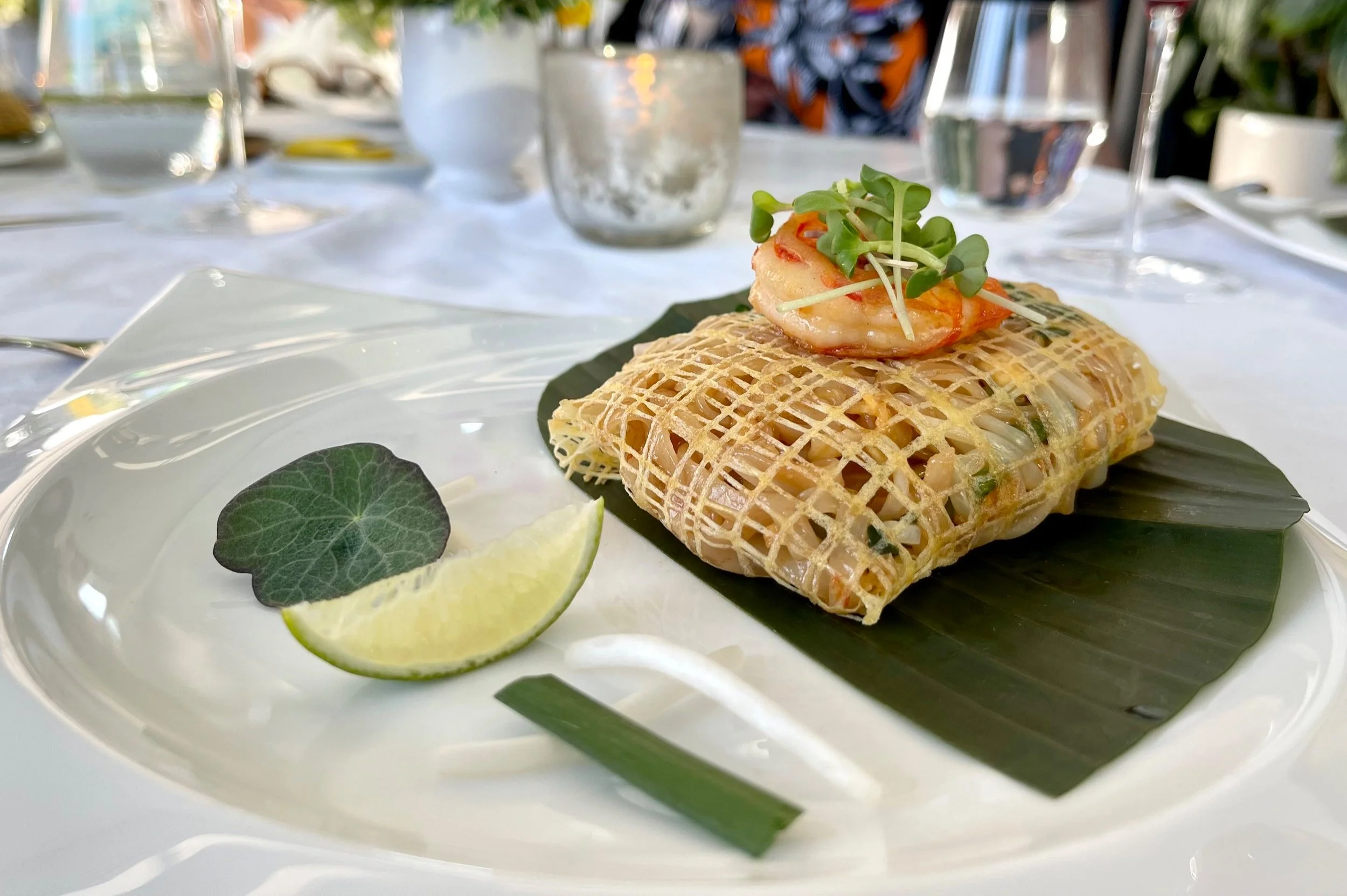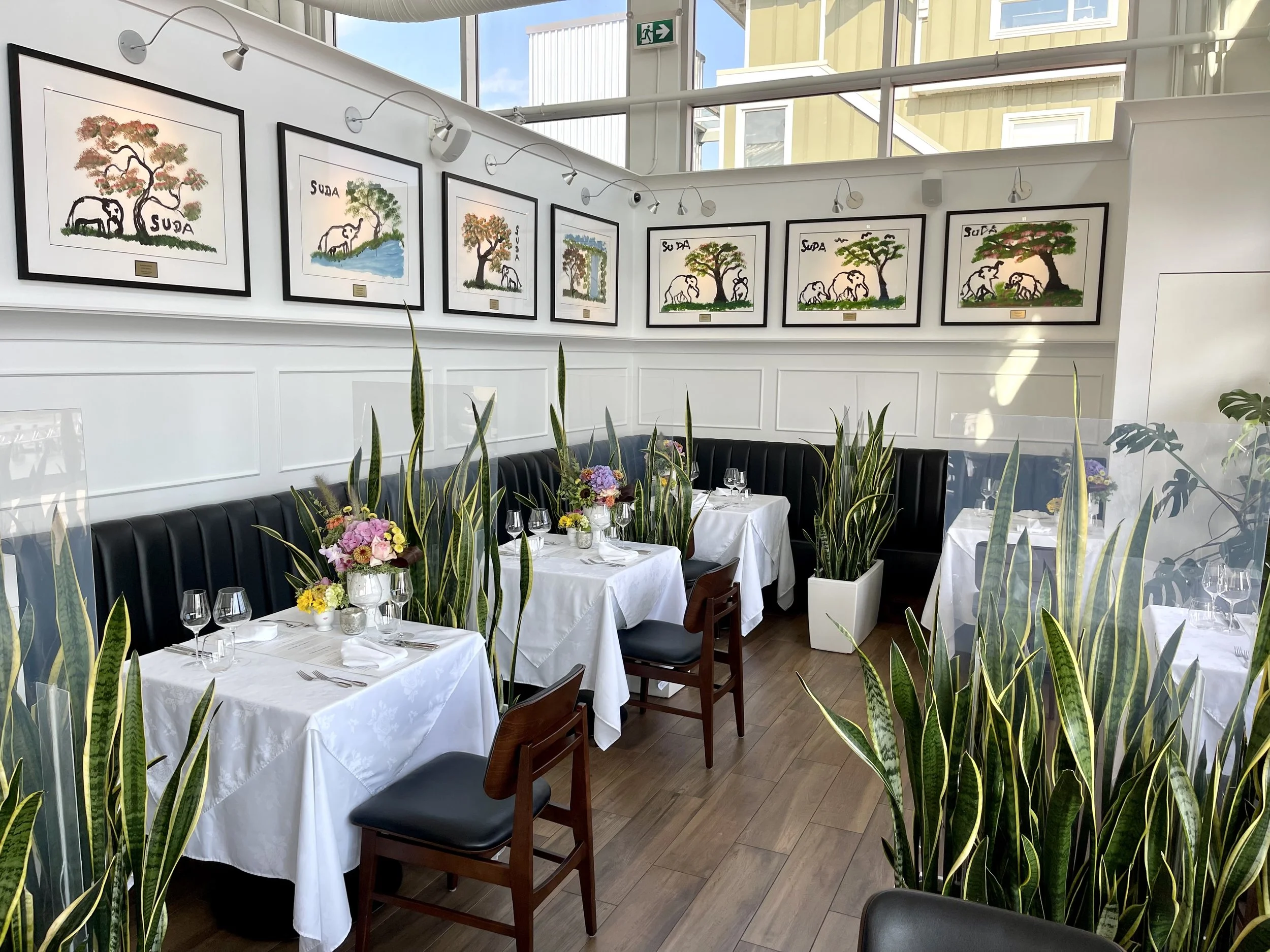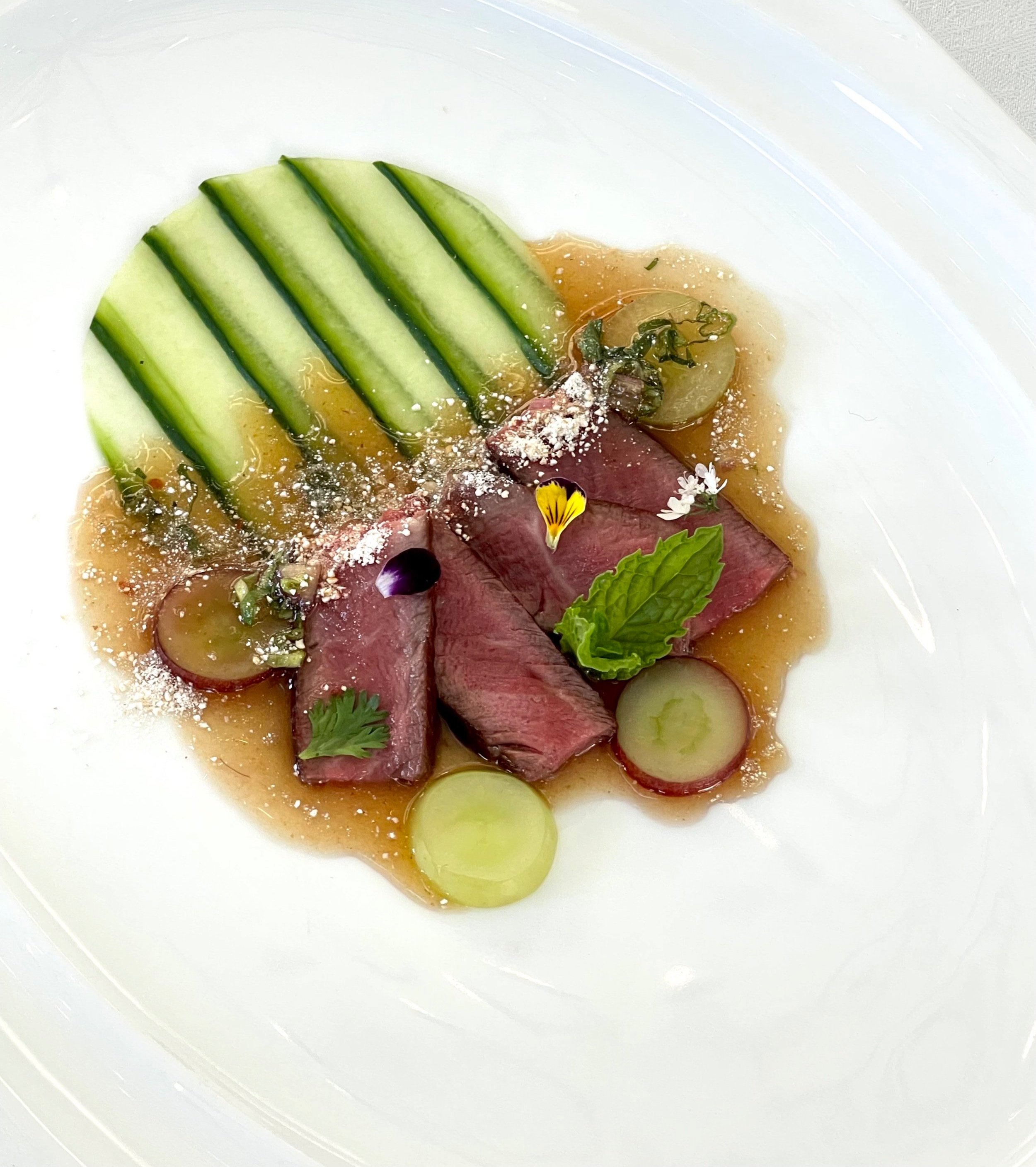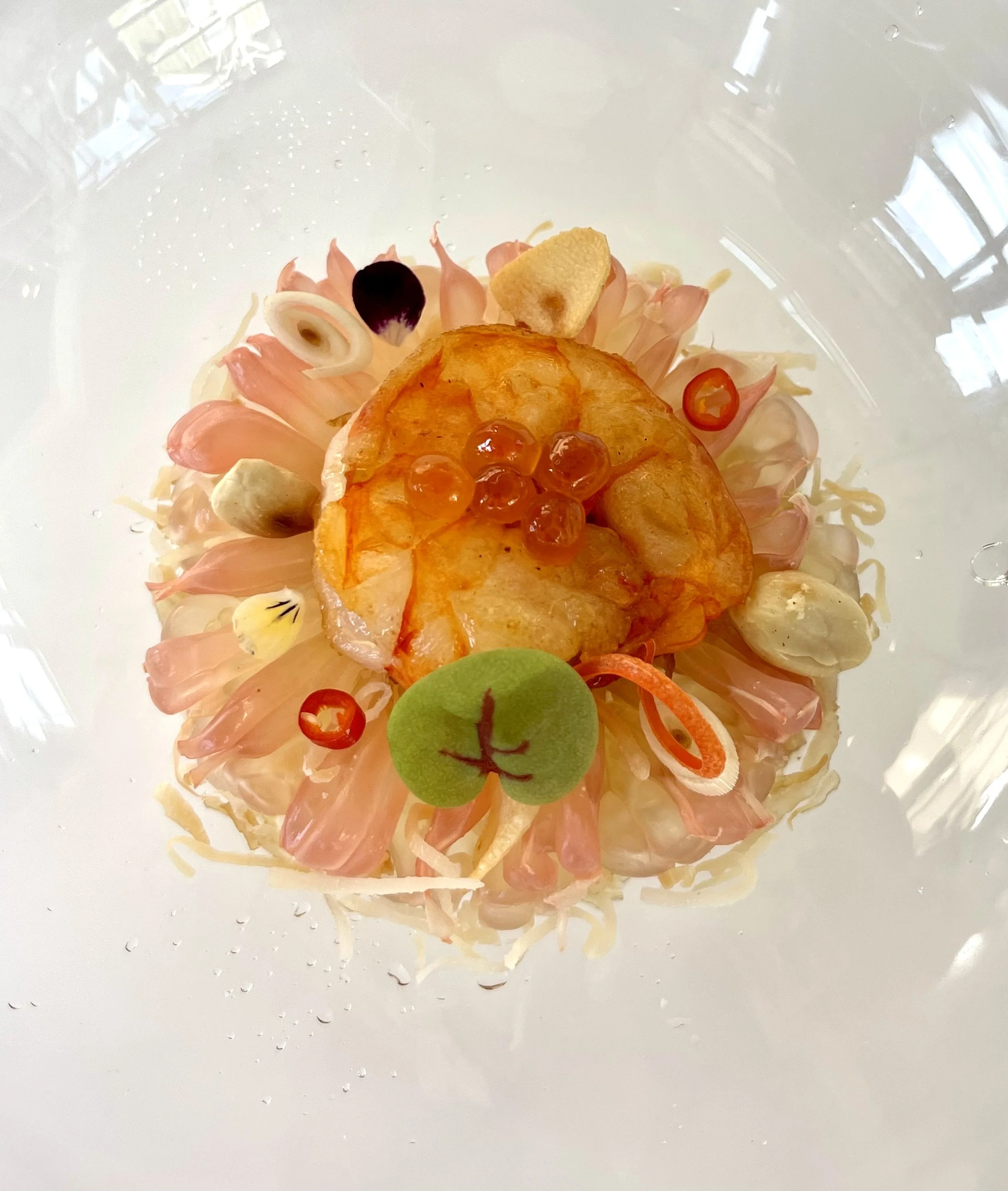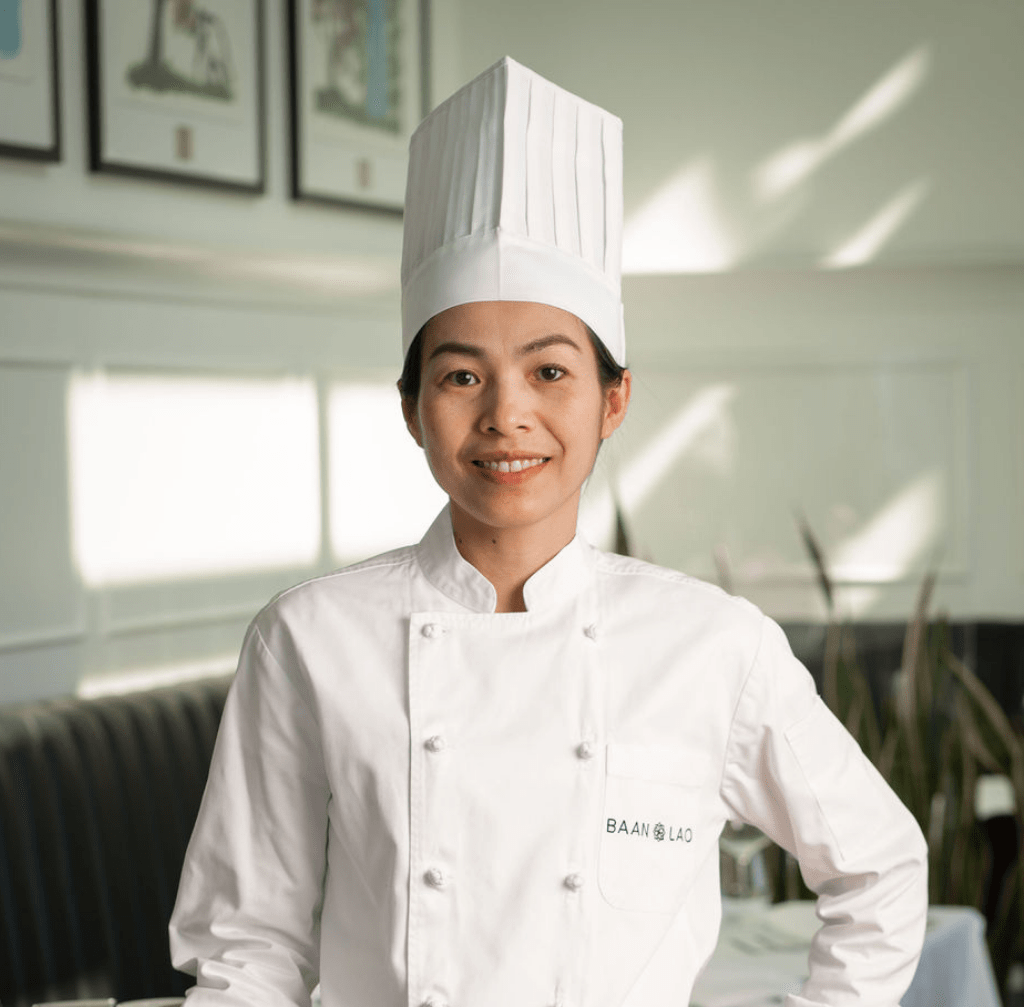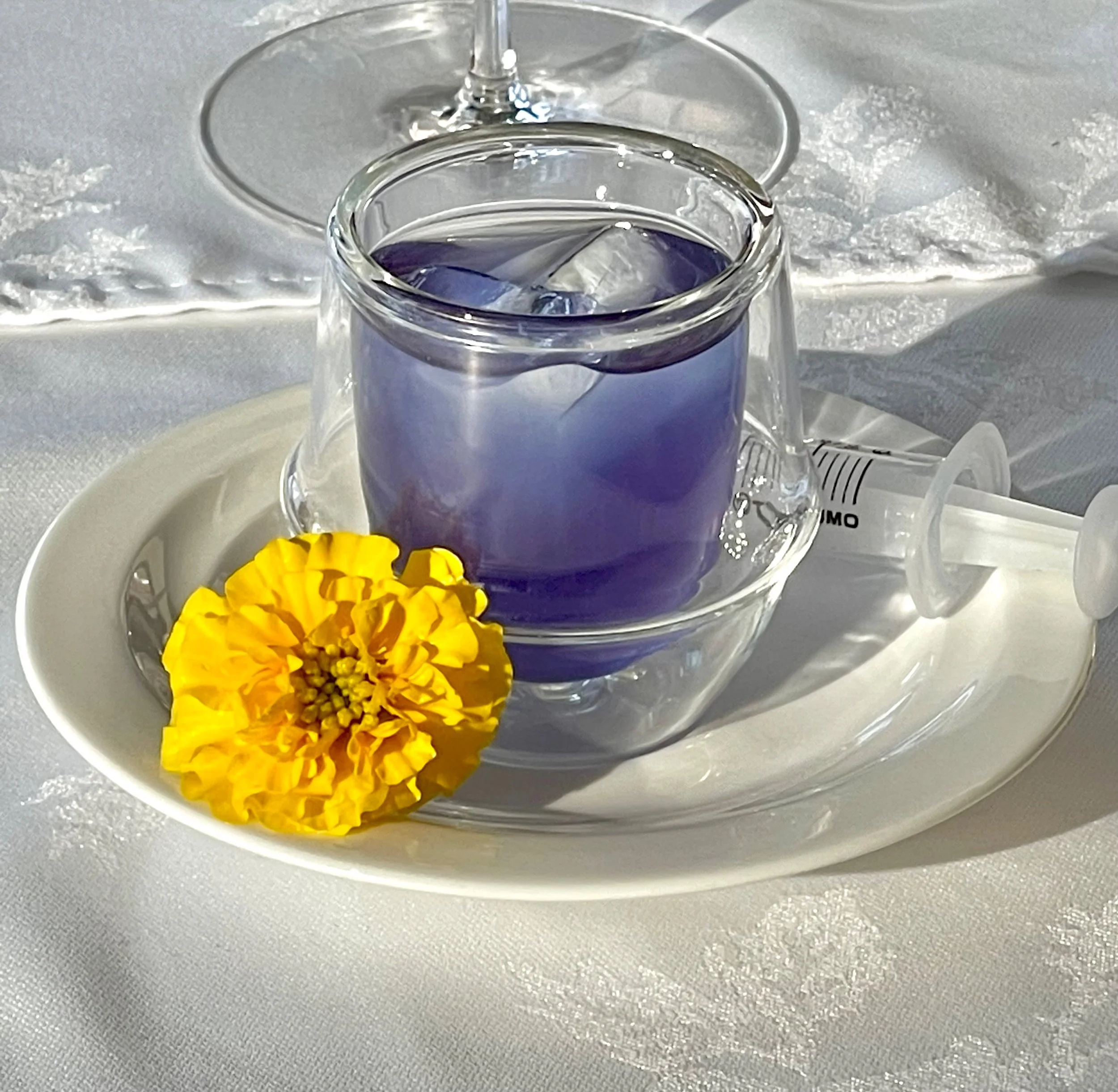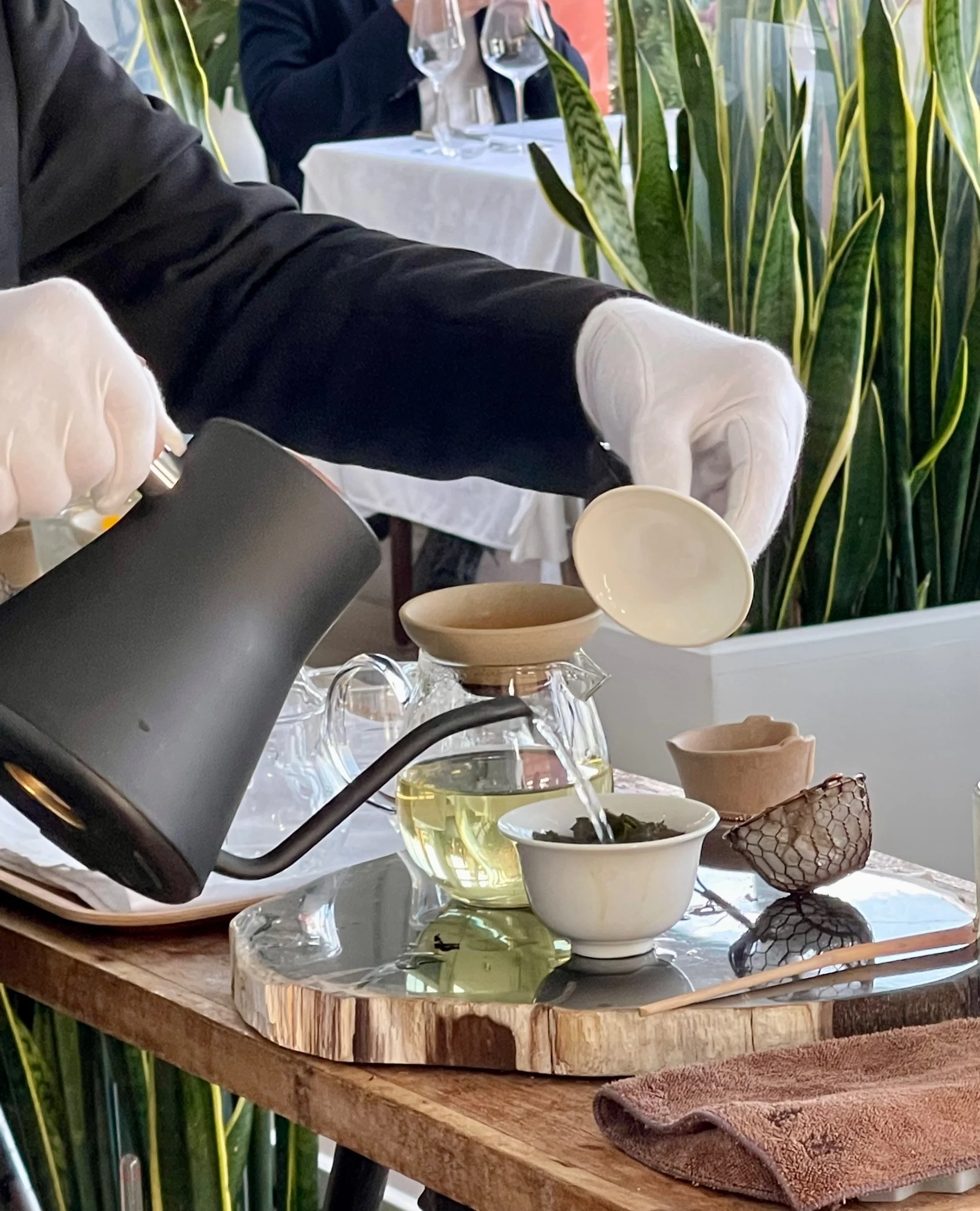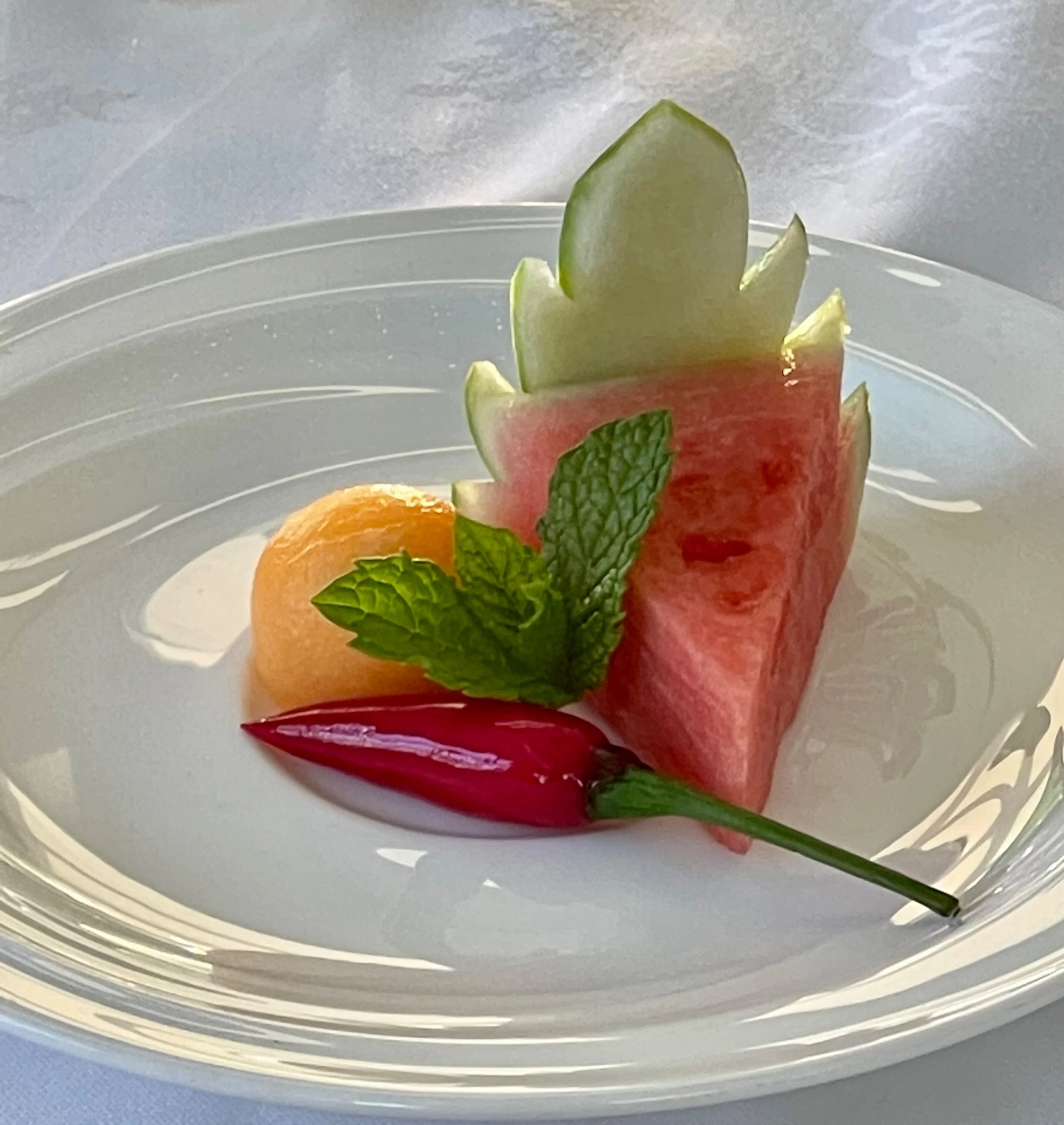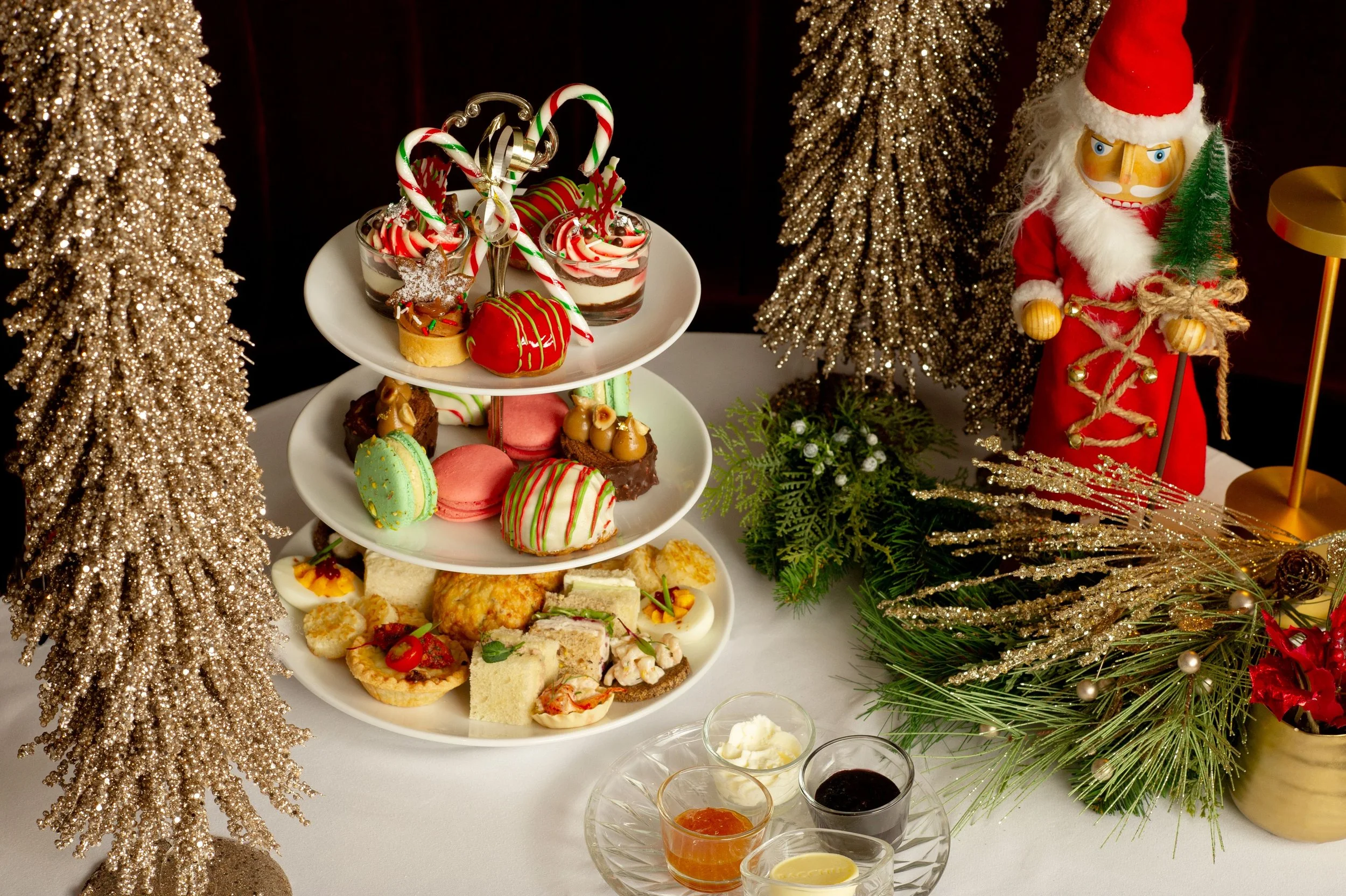Local chef creates royally inspired food at Baan Lao Fine Thai Cuisine
From insects to riceberry to hand-pressed fresh tamarind, Nutcha Phanthoupheng brings the culinary artistry of royal Thai fare to Metro Vancouver
Baan Lao Fine Thai Cuisine. Photos by Baan Lao Fine Thai Cuisine.
CHEF NUTCHA PHANTHOUPHENG, the force behind Stevetston’s Baan Lao Fine Thai Cuisine, specializes in the kind of food that’s served to kings and queens in her native Thailand. Her complex, artful dishes are a world away from the fare she grew up with in the countryside region of Isaan without any running water or electricity.
It was in that rural province where Phanthoupheng first learned to cook by her mother’s side. The family foraged for insects, lizards, mushrooms, and wild honey; grew rice, vegetables, and fruit; raised pigs, chickens, and buffalo; and fished. At Baan Lao, which translates as “our home”, she focuses on royal Thai cuisine.
The local chef’s path to the waterfront restaurant in historic Steveston Village was circuitous, Phanthoupheng having first trained and worked as a nurse and cancer researcher. Facing the pandemic head-on, she opened Baan Lao last year, the intimate space with floor-to-ceiling glass decorated with snake plants, fresh flowers, and commissioned paintings by Suda, the famous Thai elephant. Now, she’s sharing a snapshot of her culinary journey here with a new multicourse menu called A Taste of Baan Lao.
“I wanted to introduce people to an elevated form of Thai cuisine,” Phanthoupheng tells Stir of the vision behind Baan Lao. “Most people associate Thai cuisine with street food and family-style service. I love to see the surprise on the faces of our Baan Lao guests when they see the beautiful, creative plates we serve and taste the delicate, nuanced layering of flavours.
“I love to cook for my family, friends, and Baan Lao guests,” she adds. “With my previous work as a nurse and cancer researcher, I want to help educate people on the importance of eating healthy food, created from sustainable, organic sources. And, of course, I want people to appreciate the intricacy and delicate balancing of flavours that prevails in well-executed Thai cuisine. In developing this menu, I wanted to share my experience in a fun, creative way.”
If there are chefs who study culinary arts and chefs who are culinary artists, Phanthoupheng falls squarely in the latter camp.
Royal Thai cuisine involves painstaking techniques and specific criteria; for example, fruits and vegetables that are served together must all be the same size, regardless of how they’re being prepared. “When I decided to pursue a career as a chef, I purposefully sought out opportunities to train with leading chefs in Thailand, including chef Vichit Mukura, who served the Thai Royal family and has earned a Michelin star,” Phanthoupheng says. “I was first introduced to the Thai royal family when I was a nurse and was personally selected by Princess Chulaborn to become a cancer researcher at her hospital.
“As a chef, I aspire to treat my guests like royalty, offering that level of elegance and hospitality,” she says. (At Baan Lao, the food is delivered by white-gloved staff members in black suits, each plate set down on the table at exactly the same time.)
Phanthoupheng’s training also includes private cooking courses with chef Chumpol Jangprai, the Iron Chef of Thailand and the only Thai chef in the world to earn two Michelin stars. She obtained her Thai Cuisine diploma from The Blue Elephant in Bangkok, certification from the Mandarin Oriental Hotel Bangkok Cooking School, and her carving certificate from Bussaracum Royal Thai Cuisine.
The dishes at Baan Lao are meticulously designed and distinct in flavour; none of the menu items are overly spicy, contrary to a common misperception of Thai food. Phanthoupheng sees similarities between her approach to food and painting.
“I loved learning the techniques and proper balance [of painting],” she says. “These are skills that translate to cooking as well. More than anything, creating the beautiful presentations at Baan Lao provides me an outlet for my creativity. As part of my training, I was tutored by the top food-plating artist and stylist in Thailand, and I’m captivated by the beauty of food presentation.
“I believe it was in the 1st century AD that Apicius said, ‘We eat first with our eyes,’” she adds. “I want my guests to first see beauty in the food they’re about to enjoy.”
Consider Phat Thai Kung Lai Seua, or mangrove black tiger prawn phat Thai. Also known as pad Thai, the popular street food is one of the best-known dishes from Thailand. Phanthoupheng has been making and eating phat Thai her whole life. At Baan Lao, she uses herbs that she grows on the restaurant’s living wall or in her own garden; presses fresh tamarind by hand. The ingredients are enveloped in what looks like a lace; in fact, it’s a delicate cage made of egg. “It’s prepared one at a time,” Phanthoupheng says. “It’s definitely more time-consuming than the traditional presentation of phat Thai. But I believe the eye-catching and unique presentation inspires people to slow down and savour each bite. Slowing down each bite also allows your taste buds to recognize and appreciate each layer of the flavour, too.”
Bplaa Salmon Sauce Khaaio Waan, Khaao Haaw Mali translates as wild sockeye salmon green curry, organic jasmine and riceberry rice; it’s another harmoniously flavoured dish that dazzles. The salmon is marinated for 24 hours in extra-virgin olive oil, lemon grass, and kaffir lime leaves; cooked sous vide; and charcoal-grilled. It’s adorned with local microgreens, Ocean Wise Acadian caviar, and edible Italian gold leaf. The white jasmine rice and deep-purple riceberry rice from her family’s own rice fields in Thailand offset the dish’s gold, red, and green.
Perched on top of a miniature field of fresh dill and edible is a hand-roasted, organic wild insect, be it a grasshopper, cricket, forest scorpion, or silkworm larvae, in Nam Phrik Makuea Tate Khao Kriap (rice cracker with tomato Thai chili). Insects were a staple for the chef growing up, a reliable source of protein. The crackers are made with the Baan Lao rice, each one topped with crushed cherry tomatoes, roasted garlic, freshly squeezed lime juice, cilantro, and chili-pepper rings.
There’s playfulness on the menu, too. Nam Ta Khrai Bai Toei Un Chan Ma Nao is a diminutive drink that acts as a palate cleanser and consists of lemongrass, pandan, and fresh butterfly peas. In a wink to her background as a nurse, Phanthoupheng a plastic syringe with freshly squeezed lime juice sits next to the small glass. Diners inject the citrusy liquid into the blue drink then ooh and ahh as it turns vivid violet.
Pier-Alexis Soulière selected the optional wine pairings. The 2014 World Young Sommelier of the Year, he became one of very few to earn the Master Sommelier title before the age of 30, a title held by only five people in Canada, in 2016.
The restaurant is believed to be the only one in Canada to offer tea pairings by an in-house master tea sommelier. Del Tamborini executes a painstakingly precise gongfu cha-style steeping cycle. Gongfu cha, meaning “tea made with skill”, is a classic style of tea preparation originating in southeastern China, more ritual than ceremony.
Before the steeping cycle for a given tea even begins, the leaves are almost always rinsed first. From there, the first one or two infusions are swift, sometimes called “flash” infusions, almost never more than 10 seconds. Subsequent infusions get longer: a third infusion would typically be 10 to 15 seconds, a fourth would be 25 to 30 seconds, and a fifth would be 45 to 60 seconds, and so on.
“The objective throughout this gongfu process is to ensure the infusions are of equal strength to one another and are equally palatable to the guest consuming the tea,” Tamborini tells Stir. “By varying the length of the infusion time throughout the cycle, the gongfu artist ensures that different flavours can be appreciated in each infusion, that each infusion will have a similar body, and that no infusion will be too bitter due to over-infusion.”
A Taste of Baan Lao comes to a close with a multidimensional dessert featuring coconut sticky rice topped with a rosette made of fresh mango and hand-carved seasonal fruit with marzipan-like luk chup (made using mung bean paste and transformed into the shape of fruits and vegetables), and a cup of fresh mint tea.



